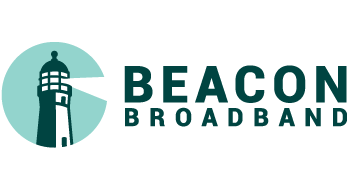The Internet of Things (IoT) is one of the most transformative technological advancements of the digital age, enabling the interconnection of everyday devices and objects through the Internet. This concept goes beyond mere data exchange between devices; it also involves automating and optimizing processes, providing greater efficiency, comfort, and security. By allowing objects such as refrigerators, lights, thermostats, and even medical devices to communicate and make autonomous decisions, loT is redefining how we interact with the world around us. This connectivity facilitates monitoring and remote control and enables smarter resource management, contributing to sustainability and cost reduction across various sectors. loT has a profound impact on numerous industries, including healthcare, transportation, logistics, and even smart homes, creating a more integrated and adaptive environment that responds to human needs. The advancement of loT holds the promise of continuous innovation, with the potential to revolutionize not only how businesses operate but also how consumers experience daily life in an increasingly connected world. For the Coos-Curry Coop, implementing and using IoT technology can allow for better use of electricity through more efficient energy systems that reduce consumption, optimize energy use, and contribute to sustainability goals. These technologies not only benefit the power companies but consumers as well through lower energy bills and intelligent rate adjustments. Smart grid technology provides real-time data about energy usage, grid health, and power quality. This allows utilities to identify inefficiencies or outages instantly, improving grid reliability and minimizing energy waste.
A few examples of IoT in action:
1. Smart Lighting: With smart lights, you can turn them on or off from your phone, or even set them to turn on automatically when you enter a room, through the clap of hands or other defined motions, the lights can dim, get brighter, or even shut off. Some can adjust their brightness depending on the time of day, creating the perfect lighting without you having to think about it. Police and Sherrif offices can incorporate shot detection technology to automatically turn on or make street lights brighter to aid police in identifying and tracking down shooters. Lighting on major corridors can automatically adjust to aid with larger pedestrian activity around parks and festivals.
2. Wearable Devices: Fitness trackers and smartwatches can monitor your heart rate, steps, sleep patterns, glycemia and more. The watch can feel if you felt or have your heartbeat is at an alert rate and, give you a timer for cancel or they call for your emergency contact. Any of those problems can alert you or a caregiver, nurse or someone in our family to help to keep you healthy and safe. Some devices are connected to doctors offices, when tracked levels exceed set parameters will notify the doctor for early intervention when needed.
3. Smart Appliances: A smart refrigerator can notify you when you’re running low on food and even help create shopping lists. It can also alert you when food is about to expire, helping you keep track of your groceries without effort.
4. Smart Traffic controls: Traffic signals control the flow of traffic and can turn lights green to allow emergency vehicles to traverse traffic with less delays. Smart traffic controls can also track pedestrians, bicycles, and crosswalks. The Oregon Coast experiences an influx of tourist traffic, both vehicle and pedestrian. If there are pedestrians impeding the flow of traffic or are in danger of close vehicular traffic, tourists crowding intersections waiting for crossing signals, smart traffic controls can turn lights red and allow for pedestrians to cross and mitigate potential danger, injury and possible loss of life. If a vehicle is travelling too fast to stop at an intersection, the traffic lights can be automatically managed to minimize potential impacts.
While the Internet of Things (IoT) offers significant benefits such as automation, convenience, and efficiency, it also presents a range of challenges and risks that need to be considered. Some of those include privacy, security, and ability for devices to communicate with each other, but the most paramount issue is connectivity.
IoT relies on robust, high-quality network infrastructure to operate. In areas with limited or unstable connectivity, devices may not function efficiently, compromising the system’s performance and reliability. Not all broadband is created equal and does not provide equal access and connectivity. Cable, Coax or hybrid (HFC) do not offer symmetrical upload and download. Smart traffic, medical, and autonomous vehicles require fast reaction times to real life situations requiring very low latency. Latency is the time it takes for data to travel to its destination equipment. Fiber optic networks provide the lowest latency, the highest speeds, and the most reliable connections.
The Internet of Things (loT) is not just a technological trend, but a silent revolution that is shaping the way we interact with the world.
